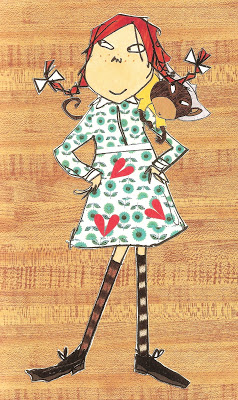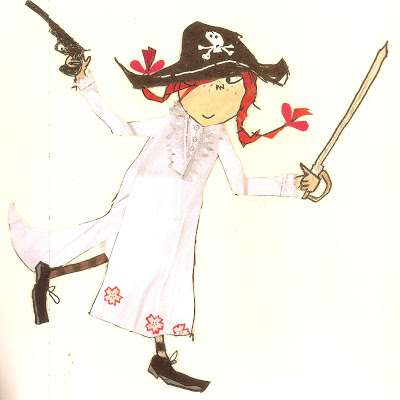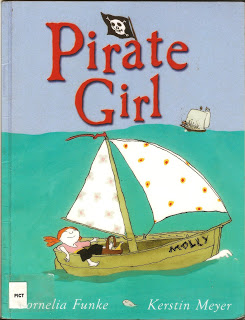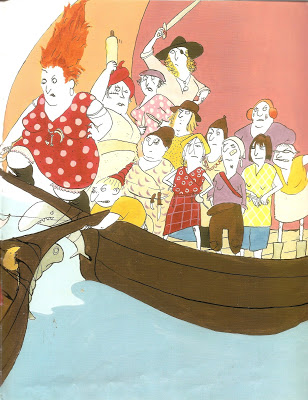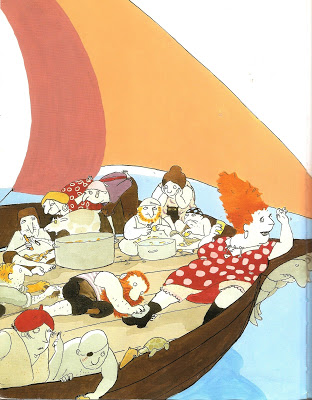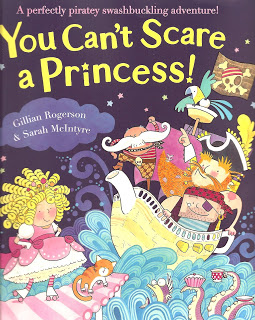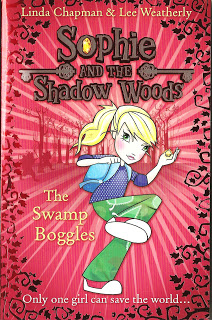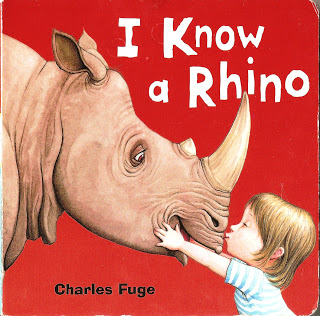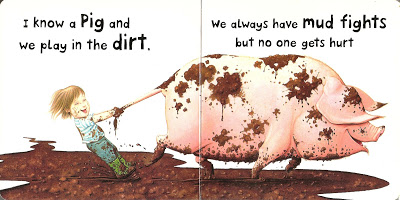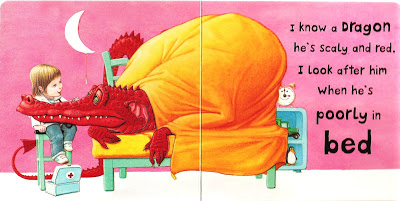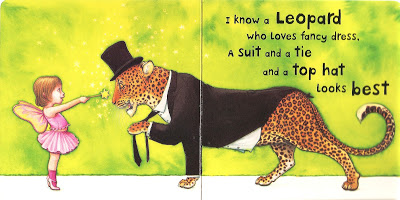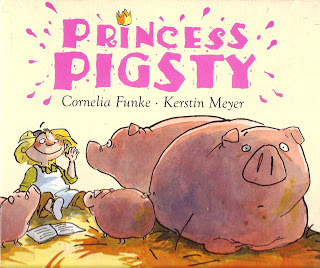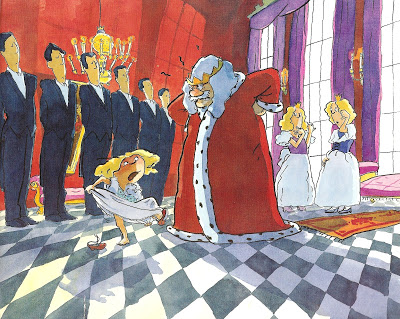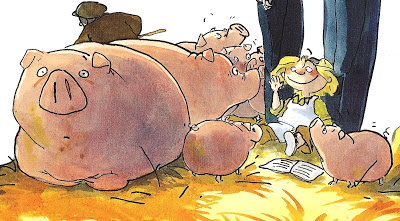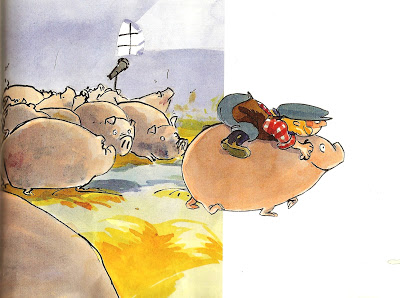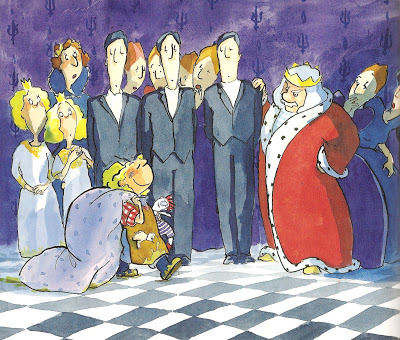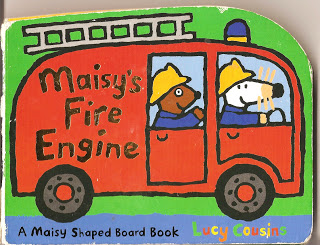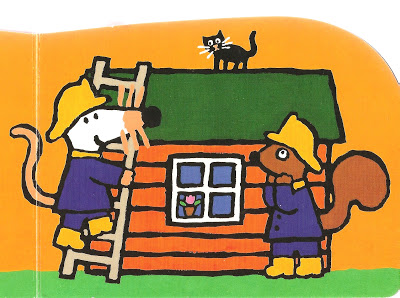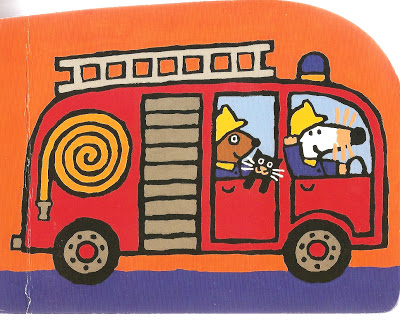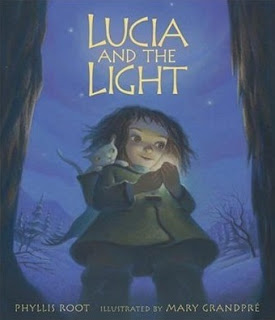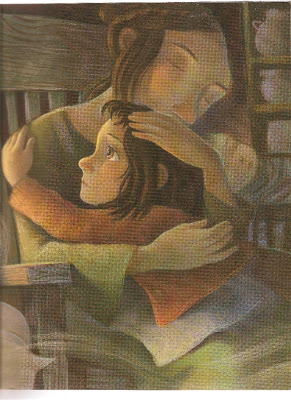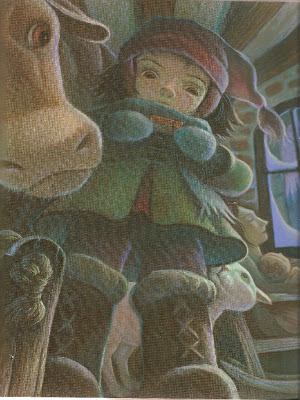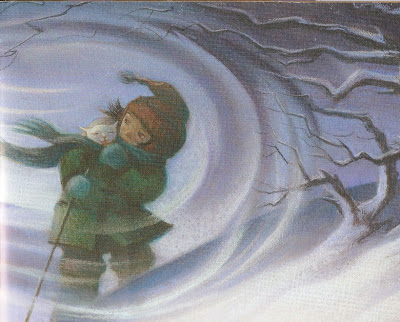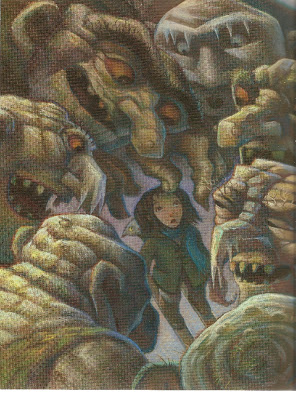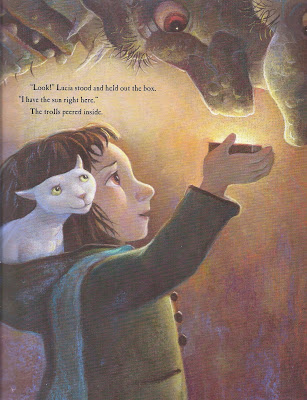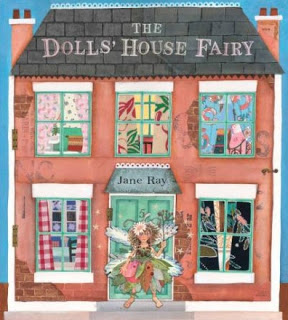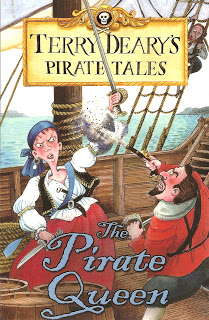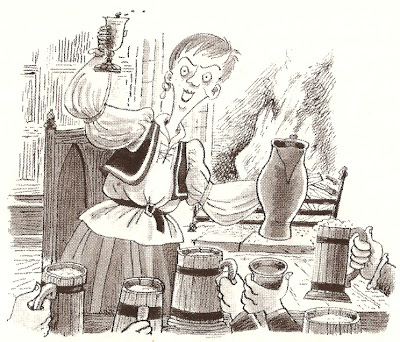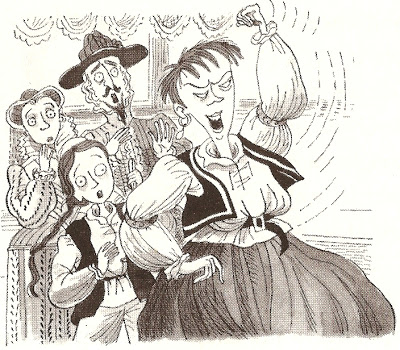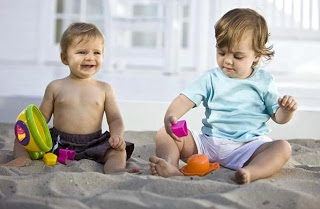Here’s another ten liberating children’s books to tickle your feminist fancy (First, catch up on part one here).
Pippi Longstocking
Astrid Lindgren
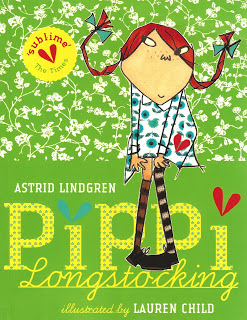
Pippi is spunky adventurous nine-year-old girl with freckles, pigtails and trademark ‘longstockings’. Some may refer to her as a tomboy. I prefer to describe her as daring and playful with a hint of smartarse. What’s more, she’s random in an intriguing and entertaining sense – she lives with a horse, a monkey, and a big suitcase of gold coins.
This book is a treasury of her various antics, which include, organising an expedition, ‘dancing with burglars’, and ‘playing tag with the police’. Her cheeky enthusiasm is contagious. One can’t help but smile when reading of her adventures. Her witty remarks are simple yet sarcastic, the kind only a child can make unscathed. For instance, when the police say she must go to school otherwise she won’t know what the capital of Portugal is, Pippi replies, “If you’re so desperately anxious to know what the capital of Portugal is, then by all means write a letter to Portugal and ask them!” The humorous narrative is complimented by delicious illustrations which combine an eclectic mix of fabrics and childlike pencil drawings with ripped newspaper. I’m not sure who would be entertained most by this book – girls, boys, or indeed their parents.
Pirate Girl
Cornelia Funke
The story begins with a crew of boozy, menacing pirate men – the stereotypical sort that “make the knees of honest seafaring folk shake like jelly”. One day they decided to rob a ship – a ship that they should have left well alone. On board was a little girl called Molly. The pirates took her as hostage and made her peel potatoes and clean boots.
But Molly was resilient, intelligent and resourceful. She had a plan. Every night while the pirates were drunk and arsing about, she wrote secret messages and popped them into empty bottles (there were plenty lying around thanks to the pirates’ alcoholic tendencies). When the pirates were safely snoring in their bunks, she tossed the bottles into the sea. Then… (fake drum role)…someone receives the bottles and comes to Molly’s rescue. That someone is ‘Barbarous Bertha’, Molly’s mother and the most dangerous of all pirates! She arrives with style, sailing in a grand ship heaving with strong pirate women of every shape and size. The matriarchal crew of pirate women give the pirate men a good seeing to (in the retributive sense), reducing them to potato peeling, boot cleaning submissives.
You Can’t Scare a Princess!
Gillian Rogerson and Sarah McIntyre
Pirates tend to be a popular theme in children’s books (no shit!), and this appears to be particularly so when the book has a feminist twist. ‘You Can’t Scare A Princess’ is another book from the pirate genre with a side helping of ‘princess parody’.
Princess Spaghetti (so called after her pasta-shaped hair presumably) lives in what I can only describe as a parallel universe full of candy-themed islands. Her castle is a giant pink cupcake (it looks like a breast to be honest). Whilst the combination of ‘pink’ and ‘cupcake’ and ‘princess’ are enough to make any feminist roll their eyes out of their sockets, fear not. They appear to act as a smokescreen behind which lurks a brave and resourceful girl.
After her father is kidnapped by pirates, said baddies make Princess Spaghetti help them find a treasure chest that is hidden somewhere in her kingdom. During their search it becomes apparent that the princess is more fearless than the pirate folk, and quick-witted to boot. She navigates treacherous terrain whilst the pirates bumble along behind her. When they finally reach the treasure chest…(spoiler alert)… they discover that another pirate has already stolen the treasure! The pirates are not happy by this at all. Cue a pitiful man-child crying spree. “I want my mummy!” one of them bawls. The accompanying illustration depicts Princess Spaghetti with an unfazed and bemused expression. This leads us to the climax of the book, which is a little random and less satisfying than the build up would lead us to expect. Basically the princess befriends the pirates and introduces them to the delights of rollerskating. Stockholm syndrome anyone?

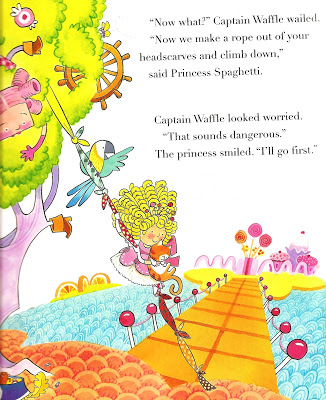

Sophie and the Shadow Woods
Linda Chapman and Lee Weatherly
On her tenth birthday, Sophie Smith’s life changes forever. As the new guardian of a magic gateway in the mysterious Shadow Woods, her mission is to stop the mischievous creatures that live there from entering our world. But disaster strikes when the Goblin King steals the key to the gateway… Sounds all very David Bowie to me.
In this six book character-led series aimed at 7+ girls, modern day heroine Sophie has to call upon all her strength and skills to defeat various creatures. Think: tween Harry Potter. Sophie is brave, resilient and sharp-witted. She is an inspiring example of the fact that girls should not be dismissed as the ‘weaker sex’ (as Sophie’s Grandad often does in the story). Aptly the book’s tagline is ‘Only one girl can save the world’. Unfortunately, the ‘Bratz’-style illustrations don’t do her justice. In some illustrations she could even be wearing make-up.
Contrast this with the official website’s description of Sophie as ‘a tomboy through and through’ which ironically I also don’t think is helpful. Strong, independent females should not attract masculine labels. Apparently Sophie lives in jeans and t-shirts and enjoys action films, sports, bikes, skateboards and dreaming of becoming a stuntwoman in films. Fair enough, but it gets predictable… She dislikes ‘girly things’ and is understandably wound-up when her grandfather does ‘boy stuff’ with her brother and leaves her out.
Evidently the writing could be criticised as lazy; for instance, it appears nonsensical that Sophie is highly talented on one hand (skilled at Taekwondo and skateboarding) yet on the other hand she is clumsy in giving away secrets to the enemy, and losing things. However I believe this dichotomy adds depth and humanity to the character. ‘Perfect’ characters can have a contemptuous effect on children’s self-esteem. That Sophie has flaws does not damage her rightful place as a role model for girls and boys alike. The realism and humanity of Sophie’s character balances perfectly with the fantastical nature of her adventures. Also, the spotlight on relationships with friends and family is well-pitched, and the book is littered with genuine laugh out loud moments. You’ll wish you were 7 again.
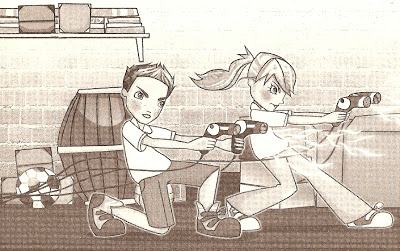
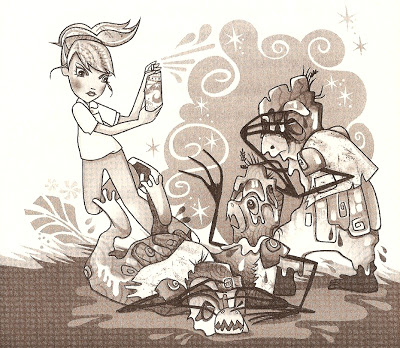
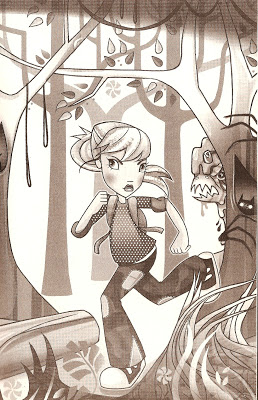
I Know a Rhino
Charles Fuge
“I Know a Rhino” is simple board book about a child’s imaginary world of play. Beautiful illustrations, overflowing with character, add to the dynamics of the plot. The central child character is designed so androgynously that they could be either male or female. For the most part, they wear jeans and a tshirt. However they have long hair and in one illustration can be seen in a pink fairy outfit. Gender is not mentioned in the text. It was only when I carried out my own research that I discovered the central character is in fact, a girl.
The eclectic range of adventures she enjoys with her various animal friends include a tea party with a rhino, playing in dirt with a pig, miming pop songs with an orangutan, administering medical care to a dragon, bathing with a giraffe, and so on. At the end of the book we discover the true identity of the animals – they are her stuffed toys.
Princess Pigsty
Cornelia Funke and Kerstin Meyer
Young princess Isabella has it all – but has had enough of it! She has had enough of being waited on hand and foot, of having to smile all the time, and of wearing beautiful dresses that she can’t climb trees in. So when the king banishes her to the pigsty, his punishment backfires – Isabella’s happier there than a pig in… well, you get the idea.
This amusing story about non-conformity challenges the widespread notion that all girls want to be princesses. In this narrative, the traditional life of a princess is presented as boring and restrictive. The quirky illustrations perfectly capture the sharp contrast between cheeky Isabella and her angelic sisters. When she is not hiding under the bed from an onslaught of hair straightners, Isabella can be seen throwing her crown out of the window in a rebellious strop.
After banishing her to the pigsty, the king finally realises that his attempts to shoehorn his daughter into the princess stereotype (“put on a pretty dress and comb your hair”) are perpetually in vain. Upon seeing her happiness and contentment as she wallows in the mud he finally accepts her as she is.
Maisy’s Fire Engine
Lucy Cousins
Children are never too young to be exposed to strong, female role models. In this simple board book feminism starts at toddlerhood. Maisy Mouse and her male side-kick, Cyril the squirrel, like to participate in a variety of activities. Today they are driving their fire engine. Maisy sits in the front and drives whilst Cyril rides in the seat behind. However when clumsy Cyril accidently sprays a cat with his water hose (the one attached to the fire engine you understand), the cat freaks out and climbs onto the roof of a random shed. Maisy to the rescue!
Cyril quivers in his boots as he watches Maisy perilously climb a ladder and rescue the grateful kitty. Needless to say, it’s refreshing to see a book aimed at very young children in which the main, most active character is female, and the more passive character is male. What’s more, the male character was the one to cause a scenario whereby someone needs saving – and our female heroine executes the rescue. Combine these elements with Lucy Cousin’s trademark bold, childlike illustrations and you’ve got a winner.
Lucia and the Light
Phyllis Root and Mary Grandpre
Inspired by Nordic lore, this atmospheric tale places the limelight on a courageous girl and her mission to save her family.
Lucia, her mother, and baby brother live in a small isolated cabin in the middle of nowhere. As the snows mount and the winds howl around their tiny home, their food supplies dwindle.
One morning, the sun does not rise. Darkness envelops Lucia’s world and when the cow stops giving milk, the brave girl decides to go out into the world and bring the sun home again. She skis and trudges through ferocious snow storms in spite of adversity and fear. Grandpre’s evocative, dimly lit acrylics capture the eerie mystery and shivery suspense of the adventure, as Lucia treks through spooky, starlit forests and finally finds the sun, held hostage by a band of wrinkly gruesome Hugh Hefneresque trolls.
Dolls House Fairy
Jane Ray
This is the second of Jane Ray’s books that I’ve had the pleasure to review. The first, ‘The Story of Christmas’, I featured in my article: “Images of Breastfeeding in Children’s Books”.
The pages of Dolls House Fairy feature Ray’s trademark gold enamels and eclectic use of textures. Rosy, a young girl and the star of the story, is in for a big surprise.
The narrative begins by painting a pretty unimaginative set-up: Rosy loved her dolls house. It was her favourite thing in the whole world because her dad had built it just for her. (Bear with me, there
is some feminism in here, honest). She played for hours with her dolls house, making up games and stories for the dolls that lived there. Suddenly one day an unorthodox fairy with anarchic behavioural problems decided to move in (booom – there it is!)
This fairy was not called ‘Rose’ or ‘Petal’ or ‘Daisy’ or any such fairy-like name. This fairy was called ‘Thistle’ and she had the hair of Russell Brand, the dress sense of Rab C Nesbit and the manners of a builder with tourettes. She wasn’t like the sweet fairies in Rosie’s storybooks. She was funny and noisy and full of mischief. She bounced on the bed and drew on the walls. She spilt things and dropped things and scattered fairy dust everywhere.
Naturally, only Rosie could see Thistle the fairy – this plot twist lends itself to multiple interpretation possibilities. Does Thistle really exist, or is she Rosie’s imaginary friend? Or is Thistle Rosie’s alter ego? Or perhaps Thistle is a metaphor for PMS or riotgrrl style rage at the Patriarchy? So many questions.
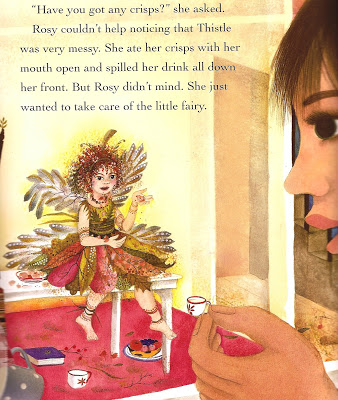
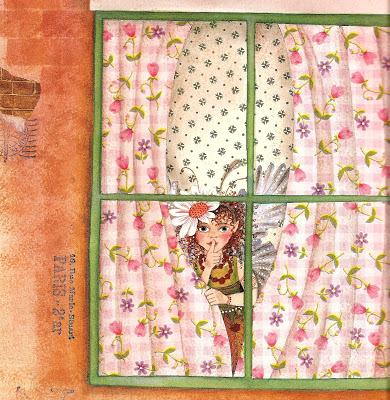
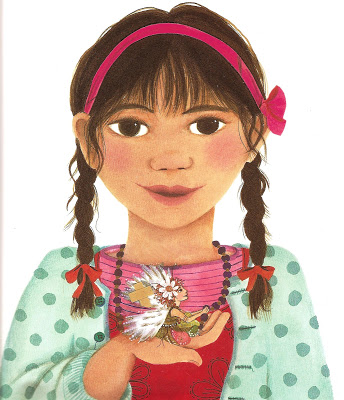
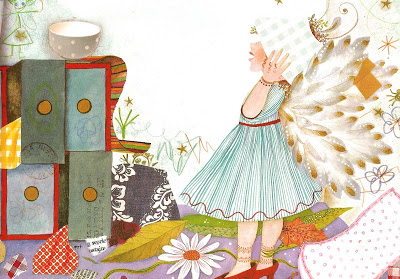
The Pirate Queen
Terry Deary
Grace O’Malley is one badass pirate. In fact, she’s “the greatest pirate that ever lived”, and woe betide you forget it. As a child she saved her father’s life at the hands of English soldiers. Now, a grown woman, and the leader of a crew of male pirates, Grace faces the English again. They capture her, but instead of being hanged, she is sent to London – by royal command. What will happen to the Queen of the Pirates when she meets the Queen of England? Will her quick witts, knife skills and potty mouth be her saviour? The humour, illustrations and characters of this book are very-Blackadder, and Grace, although volatile, unsightly and perpetually angry, proves herself a lovable rouge. One of the best feminist books from the pirate genre.
Jump to: Feminist Children’s Books, Part 3

